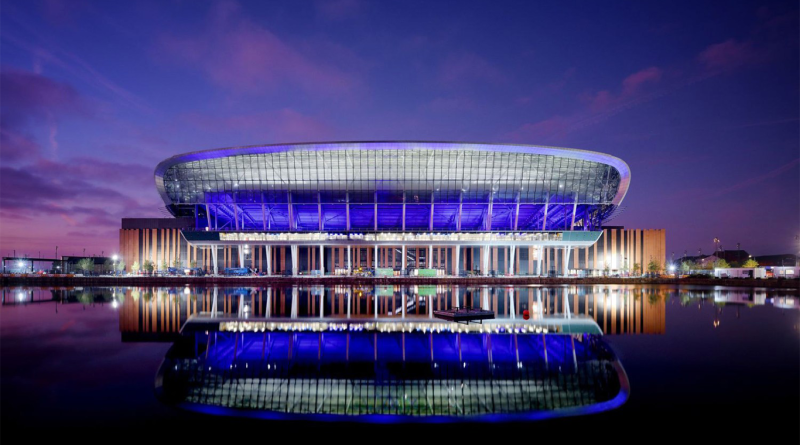Redefining Football Venues: Everton’s Modern Stadium Construction
Everton Football Club is on the cusp of a historic transformation with the construction of its state-of-the-art stadium at Bramley-Moore Dock, Liverpool. This 52,888-seater venue is more than just a football stadium; it’s a symbol of modern engineering, sustainability, and community impact.
Vision behind the Everton Stadium project
The decision to develop a new stadium stemmed from Everton’s commitment to enhancing both fan experience and the club’s long-term competitiveness. Goodison Park, Everton’s current home, holds a rich history but can no longer accommodate the ambitions of a modern Premier League team.
Bramley-Moore Dock was selected as the site for this transformative project due to its historical significance and potential for urban renewal. Nestled within Liverpool’s historic waterfront, the location offers breathtaking views and opportunities to revitalise a previously underutilised area.
The design combines architectural elegance with cutting-edge facilities, ensuring a world-class experience for fans and players alike. With this venue, Everton aims to create a new icon for football while delivering a stadium that represents the city of Liverpool on the global stage.
The role of Laing O’Rourke in stadium construction
Entrusted with the construction of this landmark project, Laing O’Rourke, a leader in modern construction methods, has seamlessly blended innovation with craftsmanship. From the outset, the firm implemented advanced off-site manufacturing techniques, reducing on-site waste and accelerating build times.
The construction faced challenges unique to its dockland setting, including ground stabilisation and the preservation of the area’s heritage. However, Laing O’Rourke’s meticulous planning ensured minimal disruption while maintaining the integrity of the historic dock.
Economic and cultural impact on Liverpool
The new Everton Stadium is not just a milestone for the football club but a catalyst for Liverpool’s economic and cultural revival. Analysts estimate the project will contribute approximately £1.3 billion to the UK economy over its lifecycle, with Liverpool set to be the primary beneficiary.
During construction, thousands of jobs were created, ranging from specialised engineering roles to local community services. This job creation continues as the stadium nears completion, with Everton announcing plans to double its stewarding workforce for the new venue.
The stadium’s ability to host a variety of events beyond football matches ensures it will become a year-round destination. Concerts, community gatherings, and other large-scale events are expected to attract an additional 1.4 million visitors annually, boosting local businesses and tourism.
Sustainability and design features
Sustainability lies at the heart of Everton’s new stadium. From the earliest stages of planning, the club and Laing O’Rourke committed to eco-friendly practices, ensuring the project aligns with modern environmental standards.
One standout feature is the use of low-carbon materials in construction, which significantly reduces the project’s overall environmental impact. The stadium is designed with energy efficiency in mind, incorporating advanced systems to minimise waste and optimise resource usage.
Accessibility is another key focus. The venue will provide dedicated spaces for bicycle parking, electric vehicle charging points, and easily navigable pathways for individuals with disabilities.
Everton’s ambitions for the future
With the completion of their state-of-the-art stadium at Bramley-Moore Dock, Everton FC is poised to usher in a new era of footballing excellence and community engagement. The club views the venue as a cornerstone of its strategy to compete with elite Premier League teams, offering unparalleled facilities for players, fans, and staff.
One of the most eagerly anticipated developments is the potential for lucrative naming rights. Reports suggest that Everton is exploring partnerships with global brands, which could generate significant revenue streams to reinvest in the squad and infrastructure. This strategic move aligns with the club’s ambitions to expand its commercial footprint on a global scale.
Beyond football, the stadium reflects Everton’s commitment to its community. Initiatives are in place to host local events, educational programmes, and cultural activities, ensuring that the venue remains an integral part of Liverpool life.
Sources:
To keep up-to-date with our latest construction and civil engineering news, subscribe to our newsletter today.
